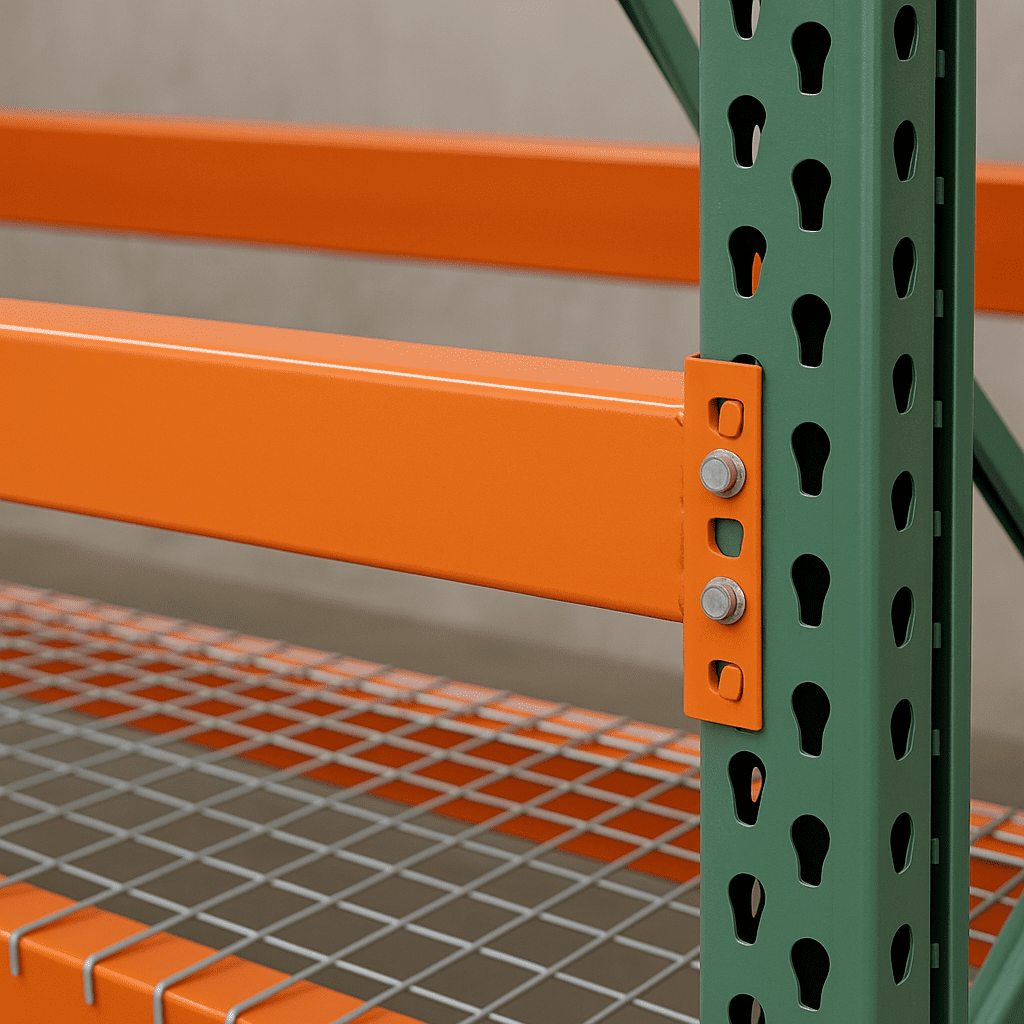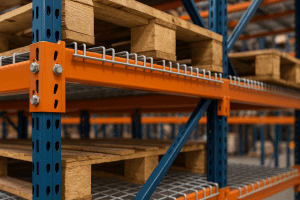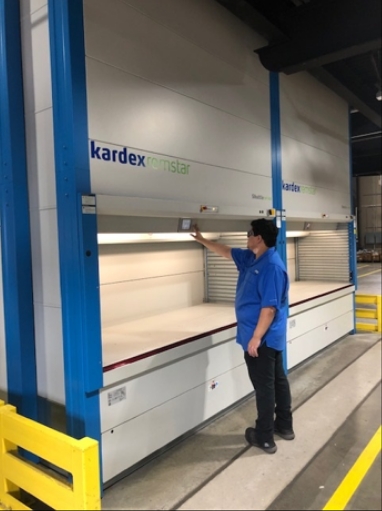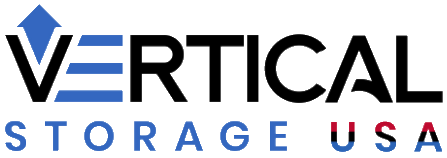When warehouse managers begin pricing a new pallet rack system, the first question is always the same: What does it actually cost? The truth is, there’s no single answer. The cost of warehouse racking can vary dramatically depending on materials, configuration, labor, and even local building codes. Whether you’re expanding capacity or outfitting a brand-new facility, understanding what drives these numbers helps you budget smarter and avoid hidden expenses later.
At Vertical Storage USA, we’ve helped warehouses of every size design and install efficient pallet rack systems that balance strength, density, and compliance. Below, we break down every major factor that influences total project cost—and how to make sure your investment pays off in both space and safety.
Material Costs: Steel, Type, and Finish

The first and biggest cost driver is the steel itself. Warehouse racks are built from either roll-formed or structural steel, and that choice alone can shift your project budget by 30 percent or more.
Roll-formed racks are cold-rolled from thin-gauge steel. They’re lighter, easier to assemble, and ideal for most general-purpose warehouses. Structural racks are built from thicker, hot-rolled steel sections that can handle heavier loads and tougher environments such as cold storage or high-impact forklift traffic. That extra durability comes at a premium—but in high-throughput operations, it can easily pay for itself over time.
Beams, uprights, and decking all affect price, too. A 96-inch beam rated for 3,000 lb typically costs less than a heavy-duty 120-inch beam rated for 5,000 lb. Decking adds another layer of variation: wire mesh decks offer the best airflow and fire-code compliance, while particle board and steel decks are common for lighter or specialized loads.
As a general range, expect to pay $60–$120 per pallet position for standard selective pallet racking and $150–$180 per pallet position for heavier structural systems. Custom finishes such as galvanization or powder coating increase cost slightly but improve corrosion resistance—especially in humid or refrigerated environments.
System Type: How Design Influences Cost
Not all pallet rack systems are created equal. The type of system you choose can double or even triple the total cost per pallet position, depending on your storage-density goals.
Selective racking is the most economical configuration and offers the highest selectivity. Each pallet is immediately accessible, but you’ll sacrifice density for that flexibility.
Push-back racking increases storage density by using nested carts that allow pallets to flow forward as loads are removed; this convenience adds roughly 20–40 percent to your total system cost.
Drive-in / drive-thru racking reduces aisle space by letting forklifts enter the rack itself, offering higher density at a moderate price point.
Finally, pallet flow racking uses gravity rollers for first-in, first-out rotation—a premium option that costs more upfront but can dramatically boost productivity in high-turnover or perishable-goods operations.
Other design factors such as pallet size, beam spacing, and seismic requirements also influence pricing. Facilities located in seismic zones may need thicker uprights, base plates, or bracing, all of which add both material and engineering cost.
Installation and Labor Costs
Even the best rack design won’t perform safely without proper installation. Labor typically accounts for 10–20 percent of your total project cost and varies by region and system complexity.
Professional installers generally charge $40–$70 per upright frame or $5–$10 per pallet position. Projects that require floor anchoring, safety bolting, and precise row spacing fall on the higher end. Add-ons like load plaques, pallet stops, and safety bars also require additional assembly time.
While some facilities attempt self-installation to save money, most jurisdictions—and insurance policies—require that pallet rack systems be installed or inspected by certified professionals. Proper installation not only meets OSHA and RMI standards but also prevents costly rework down the road.
If you’d like a complete quote that includes both equipment and labor, Vertical Storage USA provides turnkey pallet racking system installation services, ensuring your system is engineered, installed, and certified for compliance from day one.
Permitting and Code Compliance
Permitting is one of the most overlooked cost categories in warehouse build-outs. Local codes often require engineered drawings and permit applications for any rack system over a specific height—typically 8 ft or more. Fees range from a few hundred dollars in smaller counties to $3,000 or more in larger metro areas.
Fire-code compliance adds another layer of cost. Facilities storing combustible materials or operating under NFPA 13 sprinkler standards may need larger flue spaces or open-grid wire decking to allow proper water flow. Failing to plan for these details can lead to inspection delays and unexpected retrofit costs.
Don’t forget engineering. Many municipalities require a Professional Engineer (PE) to stamp structural drawings, particularly in seismic zones. The cost of those sealed drawings, plus field inspections, should be built into your total estimate.
If you’re unsure what your local codes require, our warehouse consultants can handle the permitting process—from drawings and load data to final sign-off—saving you weeks of administrative back-and-forth.
Accessories and Upgrades
Accessories may seem minor compared to uprights and beams, but they can influence both cost and safety. Wire decks, safety bars, and row spacers are standard add-ons that ensure stability and fire compliance. Column protectors and end-of-row guards protect against forklift impact and should be considered essential for busy operations.
Additional upgrades include pallet stops, labeling systems, and safety netting to prevent falling items. While these accessories can add 10–15 percent to the project total, they often reduce maintenance costs and extend the life of the system—making them a worthwhile investment.
Cost-Saving Tips
If your goal is to stretch your budget without compromising safety, consider a hybrid new-and-used pallet rack system. Many warehouses have perfectly usable uprights or beams that can be integrated with new decking or safety components.
Buying in bulk or in standard pre-engineered bay sizes can also lower costs, as manufacturers often discount full truckloads. Finally, before purchasing any new rack, conduct a warehouse layout optimization study. This ensures your aisles, beam spacing, and pallet positions match your inventory needs—helping you avoid overbuying frames or underutilizing cube space.
Outsource Equipment Company, the parent of Vertical Storage USA, also maintains a rotating inventory of used and refurbished racking systems. For facilities expanding or reconfiguring on a tighter budget, used options can save 25–40 percent compared with new installations.
FAQ: Pallet Rack System Costs
How much does warehouse racking cost per pallet position?
For most facilities, the cost of warehouse racking ranges between $60–$120 per pallet position for roll-formed selective racks and up to $180 per pallet position for heavy-duty structural systems. Prices depend on rack height, beam capacity, and any added safety accessories or finishes.
Is it cheaper to buy used pallet rack systems?
Yes—buying from a reputable source like Vertical Storage USA’s used equipment division can save 25–40 percent compared to new systems. Used components are inspected, repainted, and certified for load capacity, making them a cost-effective option for expansions or smaller projects.
Do I need a permit to install warehouse racking?
In most regions, yes. Racking systems taller than 8 feet often require engineering drawings and local permits. Our warehouse consultants can manage the entire process, from load certification to city approval.
What’s included in a professional pallet racking installation quote?
A turnkey quote typically includes rack materials, labor, anchoring hardware, and inspection sign-off. At Vertical Storage USA, our pallet racking installation packages also cover layout verification, permitting documentation, and safety signage.
Final Thoughts
The true cost of warehouse racking depends on far more than the price of steel. Materials, system design, labor, permitting, and safety accessories all add up to the total project value—and the right partner can help you balance those variables without surprises.
A well-designed pallet rack system doesn’t just store products; it improves throughput, safety, and scalability. When you approach the investment strategically, the payoff extends far beyond the price tag.
If you’re planning a new warehouse layout or an expansion, Vertical Storage USA can provide a complete cost analysis, design proposal, and compliance review tailored to your space and storage goals.
Request a Pallet Rack Cost Estimate today and start building smarter storage from the ground up.





